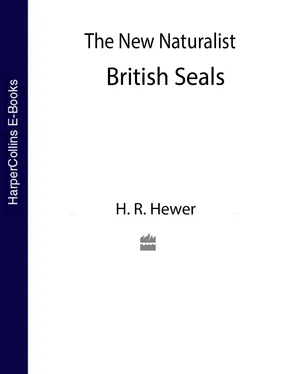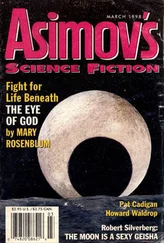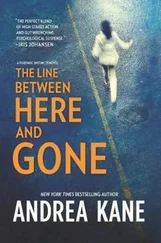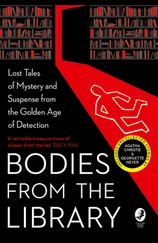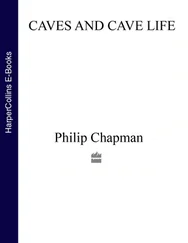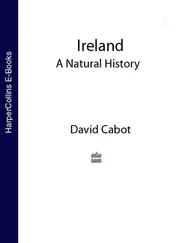1 ...7 8 9 11 12 13 ...16 To estimate the numbers of grey seals on and around the breeding grounds has always been an objective of observers and one of the difficulties has been the tendency of the seals to use small islands and skerries within a considerable radius from the breeding centre itself. Thus it was physically impossible to make a simultaneous count over the whole area, and this was imperative if the count was to have any significance. The use of an aeroplane had been tried during the breeding season in 1947 when J. L. Davies knew the numbers of seals from a ‘ground count’ in Pembrokeshire. It showed that little reliance could be placed on such observations unless the ground was fairly clear or only pups were being counted. Adults and moulters are too cryptically coloured to be easily recognisable. The only group which showed a promise of success was that of the Farne Islands where the haul-out points are necessarily limited to the outermost of the Outer Farnes and are not in fact far from the breeding islands of the Outer Farnes. From 1958 onwards monthly ground counts were made there by Mrs Hickling and Dr J. Coulson and so gave a picture the converse of Craggs and Ellison’s.
In 1958 breeding of grey seals was discovered on Scroby Sands off Great Yarmouth and appeared to point to an increase and spread of the Farne Island group. In this year, too, North Rona became a National Nature Reserve so that in 1959 an expedition comprising Dr J. Morton Boyd and Dr J. Lockie of Nature Conservancy (Scotland), Mr J. MacGeogh, the honorary warden of North Rona and Sula Sgeir and myself (the only Sassenach!) landed there on October 1st to stay for at least three weeks and make periodic censuses of the pups and other observations. Similar expeditions have gone almost every year since with varying personnel to keep a check on the numbers. Dr Boyd also organised over several years observations from scattered points over the west coast of Scotland to see whether data could be collected indicating movements of seals to or from the breeding centres. Some interesting facts have emerged from this too and from aerial photographs of some islands to which access is extremely difficult and rarely possible.
But all this was field work and without a background of knowledge based on the examination of material in the laboratory many of the deductions which one would like to have made could only be very tentative. One of the outstanding problems related to the time-scale of the grey seal’s life. Several views had been put forward in the past without any firm basis. This is very dangerous because such ideas are often repeated as though they were well established facts. Here was such an instance. Davies accepted the view that a 12-year life span was normal for the female grey seal and had based his calculations of the total south-western group population on this. There neither was then, nor is now, any way of determining the age of a seal in the field. At that time there was not any way of doing so even if the carcase of the animal was available for examination. ‘How long do they live?’ or ‘How old is it?’ are two of the commonest questions asked about animals and they are almost the most difficult to answer. To find a method was, therefore, of first priority.
Researches on the Pribilov fur-seal and several other mammals had shown during the post-war years that the deposition of some of the hard parts of the teeth was periodic and could be interpreted in terms of years, just as one can determine the age of some fish from their scales. By the late 1950’s I had satisfied myself that the layers of cement on the outside of the root of the teeth could, after some practice, be so used in the grey seal with reasonable accuracy. All that was now wanted was more material.
During these years complaints from the salmon fishers, both rod and net, had been growing. Also from the white fish industry came reports that the occurrence of cod-worm was very much on the increase and the grey seal was blamed as the vector of this parasite while the Farne Island group were thought to be the centre of the culprits. Consequently the grey seal became of economic importance. The carcases of seals killed at the salmon nets along the east coast of Scotland were then made available and a great deal of material began to come in. It was not very well preserved of course and it was highly selective consisting only of those seals whose bodies could be recovered; if they were too heavy to handle they were not brought ashore. However, it was a start. Added to this an investigator, Mr E. A. Smith, was appointed in 1959 jointly by the Development Commission (on the Fisheries side) and by Nature Conservancy; he soon found that there was a group of grey seals (as well as common seals) in Orkney. Tagging soon showed that they were as guilty as the Farne Islands ones for depredations on the salmon of the Scottish east coast. Moreover the group was a very large one and could supply material in sufficient quantity for research without fear of seriously depleting the stocks. Of the other two known large groups, Farne Islands and North Rona, one was a sanctuary under the National Trust and the other a National Nature Reserve. Orkney and later Shetland then supplied most of the really valuable material. Further, when some degree of cull was decided upon during the breeding season, the statutory protection afforded the grey seal since the early 1930’s was lifted and for the first time we were able to obtain a sample of a breeding population in October 1960. Using the already discovered method of age determination an entirely new light was thrown on the age structure of the population, on the sexual life of both bulls and cows and many of the field observations previously made began to fall into place and to make sense.
Many more minor problems have been worked on since, particularly by Mr Smith in the field and by Dr Backhouse and myself in the laboratory. None of us however has failed to take part in the other type of work involved, since cross-fertilisation of ideas between field and laboratory is essential for orderly progress to be made. There remained of course a number of outstanding puzzles which will be mentioned in the pages which follow.
Within the last few years however, there have been developments which promise a continuation of systematic and sophisticated research, not only on the grey seal, but also on the common. The establishment of the ‘Seals Research Unit’ at Lowestoft under the National Environment Research Council with Mr Nigel Bonner in charge assisted by a small team of very active and resourceful zoologists has already shown what can be done using more modern equipment and the importance of prolonged co-ordination in work which must of necessity be scattered over a wide geographical area. Some of these results will be referred to later on.
It is now necessary to define certain words which will be used to describe collections of grey seals when found on land. In the past the term ‘colony’ has been used in so many different senses that it has become almost meaningless and I shall not employ it. Before appropriate alternative words could be found it was necessary to know something about the seals and how the world population was organised. Already it has been shown that there are three major units and I propose to refer to these as ‘forms’. This term does not have the precise meaning taxonomically that ‘sub-species’ would carry but it does suggest that we are dealing with sub-units of the world population which are distinct on biological grounds as well as geographical. So little is known as yet of the break-down of the Baltic and western Atlantic forms that it is only possible to supply terms to describe the composition of the eastern Atlantic. Here first we must distinguish between the centre of breeding and places where, in the non-breeding season, the seals may haul out. The breeding centre will consist of ‘rookeries’ where pups are born and mating takes place. In addition there are collections of seals associated with the rookeries to which reference will be made later. The important biological fact of the rookery in relation to seal populations is that it is the origin of the population. If therefore the females may use one of several adjacent rookeries, the products of these rookeries must be considered as a single population arising from a ‘group’ of breeding centres. Here I propose the use of the word ‘group’ to describe a subdivision of the eastern Atlantic population which appears to behave as an entity and to possess some definable characteristics, either geographical or biological or both, which separate them from other ‘groups’.
Читать дальше
